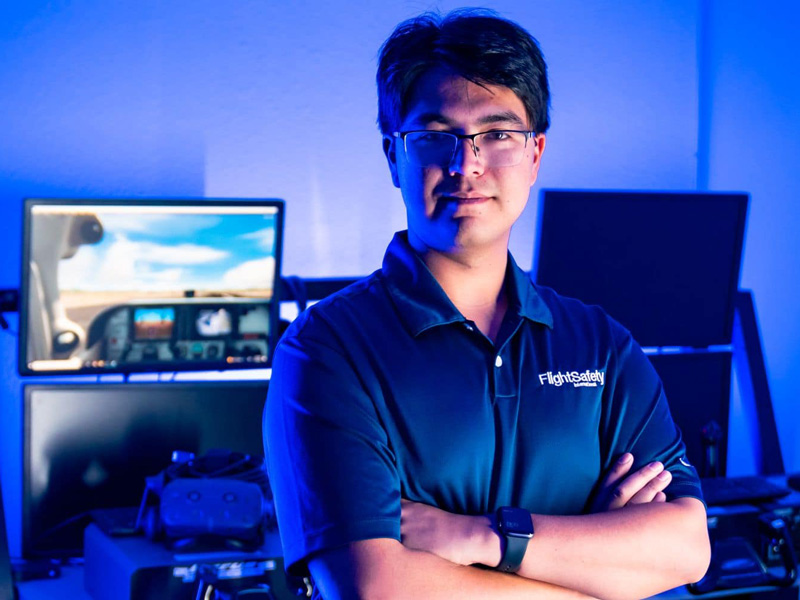
After graduating with his B.S. in Aeronautical Science and the full suite of pilot ratings, Kurkchubasche is today the aviation safety program manager at the Prescott, Arizona, campus and is also pursuing his Master’s in Business Administration in Aviation through the Worldwide Campus.
“I came here with nothing, and I ended up where I am today,” said Kurkchubasche, who is from Los Gatos, California, and did his initial flight training at Reid-Hillview Airport near San Jose. “I worked my way up quite a bit.”
Along the way, he’s also gotten involved in cutting-edge research work that explores how effective virtual reality can be in all types of primary aviation training. In late 2019, Kurkchubasche began working with Embry-Riddle instructor Dr. Michelle Hight after completing her course on domestic and international navigation.
“I’ve been using Microsoft Flight Simulator X ever since it came out in the early 2000s,” he said. “I’ve become the subject matter expert on that background of items, such as all the add-ons and aircraft that we can add to the simulator.”
Hight, now Senior Manager of Human Factors & Cross-Fleet Training at Hawaiian Airlines, sent Kurkchubasche to True Course Simulations for a virtual reality demo to get his take on a full immersion system that could help enhance actual flight training. Even with his prior simulation experience, it made quite an impression.
“Essentially, we were up in Alaska in a 172,” Kurkchubasche said. “[They] gave me an engine failure and said, ‘land it.’ That was easily the most realistic and most stressful times that I’ve had flying, and it wasn’t even a real airplane.”
The initial study into using VR to augment fight training had just started when the pandemic hit and shut it down. Using an IGNITE grant from Embry-Riddle’s Office of Undergraduate Research, they began to develop what ended up being an experimental course for the College of Aviation.
When classes resumed, the research project was restarted. Seventeen participating students were split into two groups, with one group using simulated training with just a computer and a joystick while the second group went full VR.
Kurkchubasche joined Dr. Hight among the authors of the study, which was published in January.
“Due to the limitations we had with COVID-19 and the limited number of students, it wasn’t enough to develop full sets of results, but it was enough to develop that there is an interest and that [the VR training] was beneficial,” he said. “A lot of the students would use it as a break from their homework. They would come by and have some fun learning how to do maneuvers.”
Building on the kind of undergraduate research opportunities only Embry-Riddle can offer, Kurkchubasche is now exploring further research into VR as a flight training device.
“We’re starting small with one computer and one station, and then we’re going to see what it can do,” Kurkchubasche said. “We want to tie it up with the campus with the air traffic control lab and eventually have the ability to have one of the Air Traffic Management majors live controlling one of our pilots in VR and help them practice and learn.”
“As this technology starts to improve and get more accurate and more realistic, I sure would hope that we would have the ability to start using it more.”
